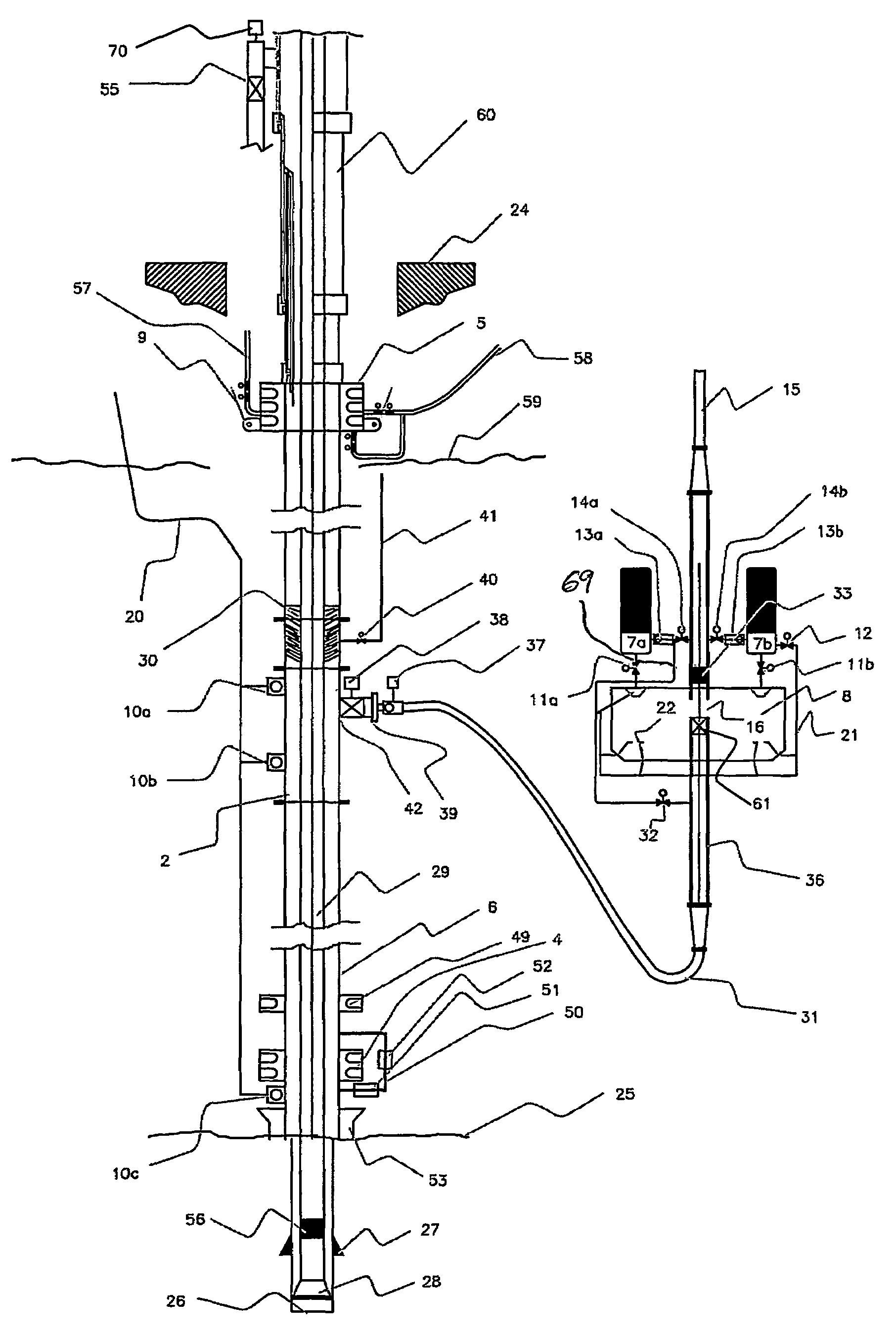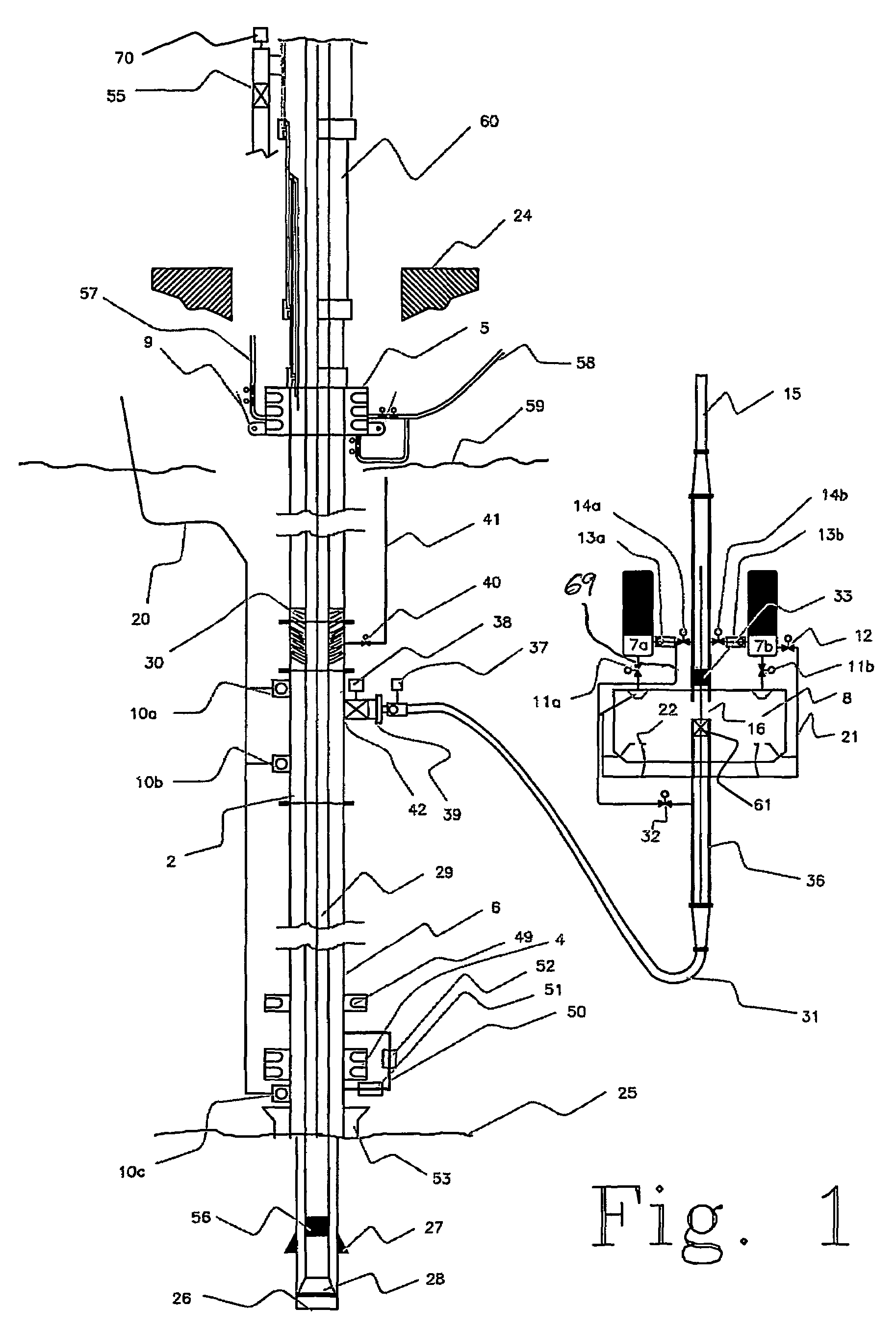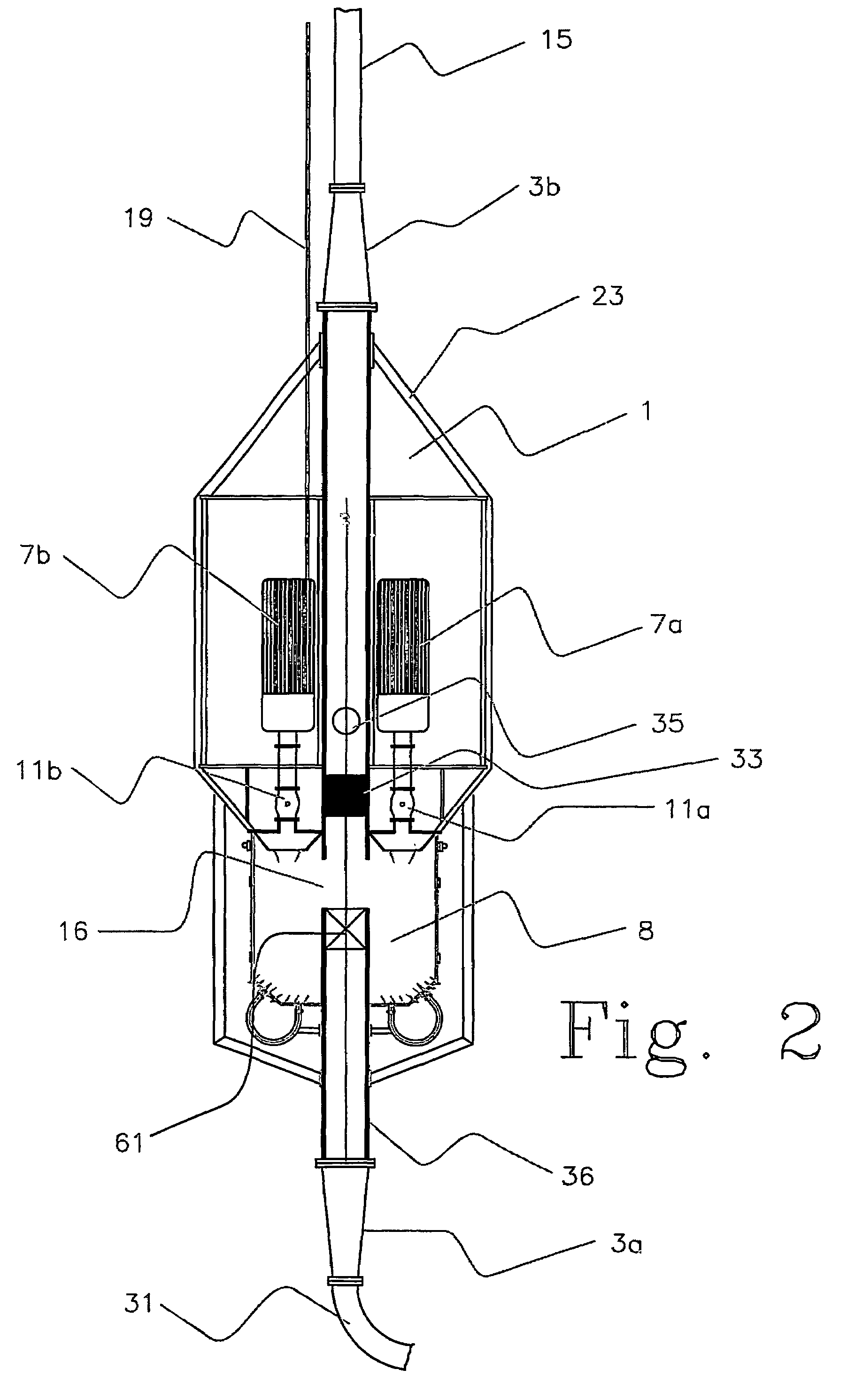Arrangement and method for regulating bottom hole pressures when drilling deepwater offshore wells
a deepwater offshore well and pressure regulation technology, applied in the direction of drilling pipes, drilling well accessories, sealing/packing, etc., can solve the problems of increasing the dynamic force of the bottom hole, increasing the pressure of the bottom hole than is required for formation control, and increasing the difficulty of drilling. the effect of the operator
- Summary
- Abstract
- Description
- Claims
- Application Information
AI Technical Summary
Benefits of technology
Problems solved by technology
Method used
Image
Examples
Embodiment Construction
[0057]In the following detailed description, taken in conjunction with the foregoing drawings, equivalent parts are given the same reference numerals.
[0058]FIG. 1 illustrates a drilling platform 24. The drilling platform 24 can be a floating mobile drilling unit or an anchored or fixed installation. Between the sea floor 25 and the drilling platform 24 is a high-pressure riser 6 extending, a subsea blowout preventer 4 is placed at the lower end of the riser 6 at the seabed 25, and a surface blowout preventer 5 is connected to the upper end of the high pressure riser 6 above or close to sealevel 59. The surface BOP has surface kill and choke line 58, 57, which is connected to the high pressure choke-manifold on the drilling rig (not shown). The riser 6, does not require outside kill and choke lines extending from subsea BOP to the surface. The subsea BOP 4 has a smaller bypass conduit 50 (typically 1-4″ ID), which will communicate fluid between the well bore below a closed blowout pr...
PUM
 Login to View More
Login to View More Abstract
Description
Claims
Application Information
 Login to View More
Login to View More - R&D
- Intellectual Property
- Life Sciences
- Materials
- Tech Scout
- Unparalleled Data Quality
- Higher Quality Content
- 60% Fewer Hallucinations
Browse by: Latest US Patents, China's latest patents, Technical Efficacy Thesaurus, Application Domain, Technology Topic, Popular Technical Reports.
© 2025 PatSnap. All rights reserved.Legal|Privacy policy|Modern Slavery Act Transparency Statement|Sitemap|About US| Contact US: help@patsnap.com



